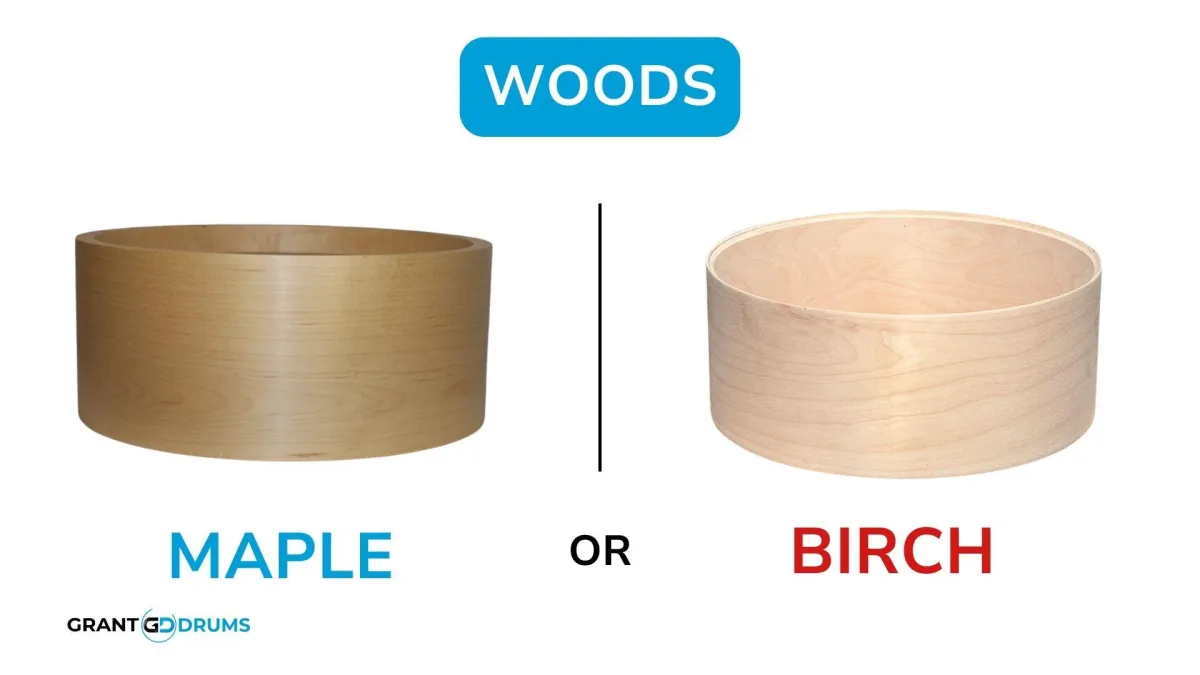ACADEMY MEMBERS
LEARNING TIME
with


The Tonewood Showdown: Maple vs. Birch Drum Shells
The sound of your kit starts with the shells themselves. Wood choice plays a significant role in shaping your drum's tone, sustain, and projection. Today, we'll delve into two popular shell woods: maple and birch, to help you pick the perfect foundation for your drumming style.
Maple: The Warm and Versatile Champion
Maple is a classic drum shell wood, prized for its well-rounded sonic character. Here's what makes maple a favorite:
Warmth and Body: Maple shells resonate with a rich, full-bodied sound. They excel at producing warm lows and pleasing mids, making them ideal for a wide range of genres, from mellow jazz to punchy rock.
Sustain: Maple drums have a longer natural sustain compared to birch. This allows notes to ring out longer, creating a smooth, singing quality that's perfect for complex fills and expressive playing.
Versatility: Maple's well-balanced tone makes it a versatile choice. It can be tuned low for deep, thunderous tones, or cranked up for brighter attack. This allows drummers to explore different styles without needing a dedicated shell set for each genre.
However, maple shells also have some characteristics to consider:
Cost: Generally, high-quality maple shells can be more expensive than birch.
Weight: Maple is a denser wood, making drums slightly heavier than birch shells of the same size.
Birch: The Bright and Focused Contender
Birch is another popular shell wood, known for its distinct sonic personality:
Attack and Projection: Birch shells produce a brighter, more articulate sound with a pronounced attack. They project well, making them ideal for cutting through loud mixes in rock, metal, and high-energy styles.
Shorter Sustain: Birch drums have a shorter natural sustain compared to maple. This translates to a tighter, more focused sound that speaks clearly, especially at faster tempos.
Sharpness: While some drummers love the birch attack, others might find it a bit too sharp. Proper tuning and head selection are crucial to tame the brightness if needed.
Here are some additional factors to consider with birch shells:
Cost: Birch shells are generally more affordable than maple, making them a budget-friendly option for beginner and intermediate drummers.
Versatility: While birch excels in brighter genres, it can still be tuned to achieve a wider range of sounds.However, it might not offer the same warmth and low-end depth as maple.
Choosing Your Wood: Matching Your Musical Voice
The ideal shell wood ultimately depends on the sound you're chasing:
Choose Maple if: You prioritize warmth, body, and longer sustain. A great choice for drummers who play a variety of styles or crave a smooth, expressive sound.
Choose Birch if: You prefer a brighter, more focused attack with shorter sustain. Ideal for drummers who play rock, metal, or other high-energy genres where projection and clarity are key.
Bonus Tip: Don't be afraid to mix and match! Some drummers utilize a combination of maple and birch shells within their kit, creating a customized tonal blend.
Remember, the best shells are the ones that inspire you to play. Listen to drummers you admire, experiment with different woods, and find the sound that speaks to your drumming soul. Happy hitting!
Sick of losing focus and trying every drum exercise you can find on YouTube?
It's time for the...


FREE DRUM CHART
CHOP CHOP
Drum Chart
22 Time Signature Changes in 59 Seconds!
Enter your details and get the chart to your inbox in minutes!
You will receive your Free PDF Chart to your inbox. Please check your spam filters if you can't see it.
Your email will come from help@mail.grantdrums.com



